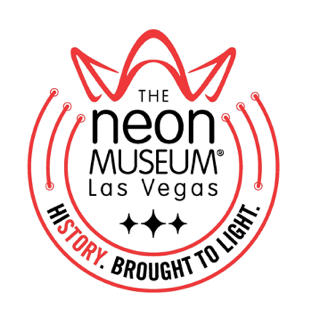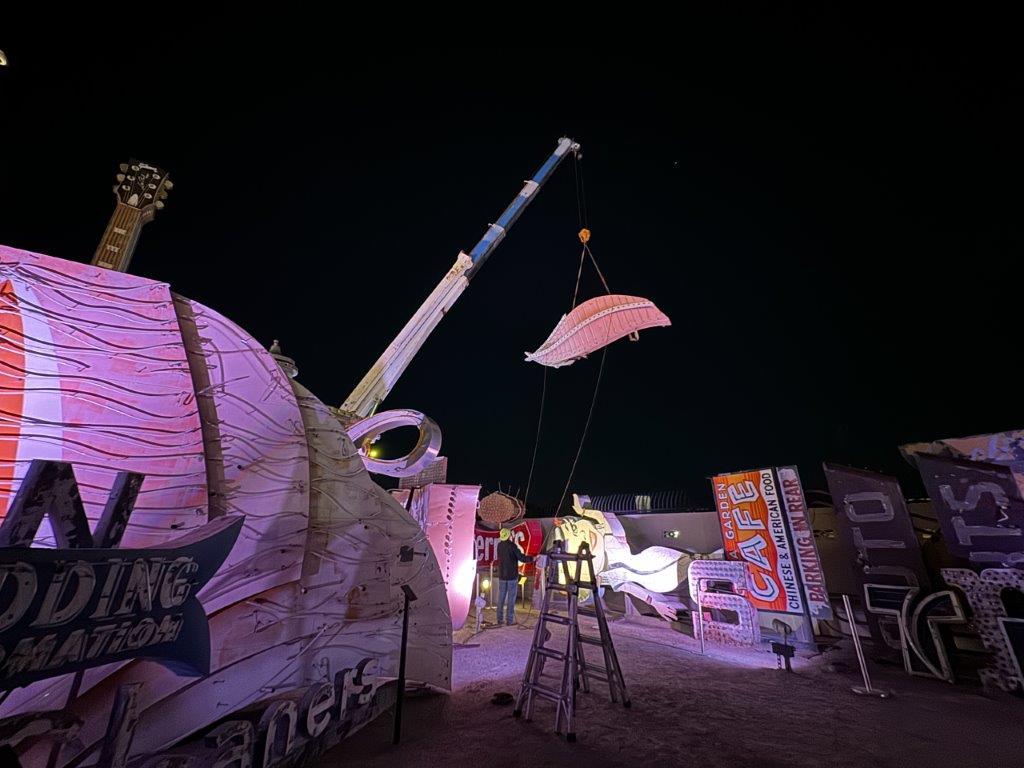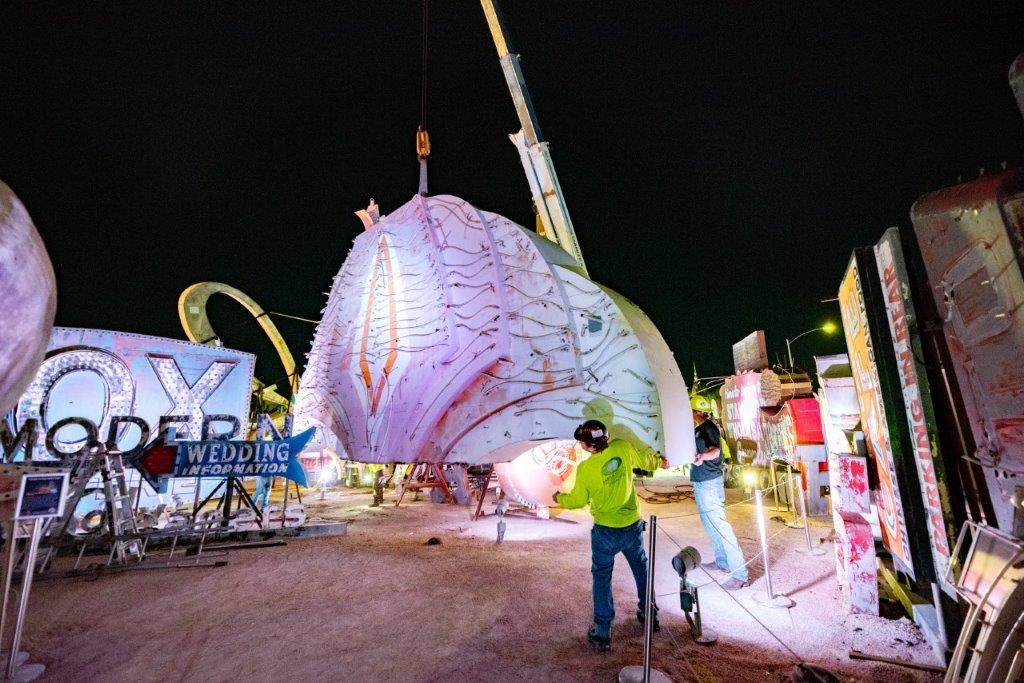
THE NEON MUSEUM IN LAS VEGAS RELIGHTS THREE HISTORIC FLAMINGO LAS VEGAS HOTEL & CASINO SIGNS

New Installation Spans 30 Feet in the Neon Boneyard
The Neon Museum – the Las Vegas’ non-profit 501(c)(3) organization dedicated to collecting, preserving, studying and exhibiting iconic Las Vegas signs – has officially restored and relit three iconic neon pieces from the Flamingo Las Vegas Hotel & Casino. Merging the 1976 roadside pylon sign originally installed on E. Flamingo Road and two feather plumes, the new installation in the Neon Boneyard stands 20 feet tall and 30 feet wide.
“The Flamingo Las Vegas Hotel & Casino serves as a huge part of Las Vegas history and we are honored to help preserve some of their story,” said The Neon Museum executive director Aaron Berger. “We’d like to thank our donors for their gracious contributions to help keep Las Vegas stories alive.”

The three Flamingo pieces restored include the historic 1976 roadside pylon inspired by Bill Clarke’s 1967 mega-pylon fabricated by Ad-Art signs. The two feather plumes were designed by Raul Rodriguez who was a renowned parade float designer, most notably for the annual Tournament of Roses Parade in Pasadena.

The original concept and construction of the Flamingo started with guidance from Bill Wilkerson – a Los Angeles entrepreneur. Wilkerson faced financial problems during the construction of the property, which led to him bringing on Benjamin “Bugsy” Siegel as his business partner. Siegel and his team of associates eventually pushed Wilkerson entirely out of the project.
Originally opening in 1946, the Flamingo was the third resort on the Strip. The opening was poorly attended because the hotel was not fully completed, and bad weather kept Siegel’s friends at home in Hollywood. The hotel reopened in March of 1947 – but it was too late for Bugsy to make any profit. He was assassinated months later in June of 1947 in Beverly Hills. That same day, the mob brought in Gus Greenbaum and Moe Dalitz to run the operations of the hotel. After changing ownership, the Flamingo was acquired by Hilton in the 1970s and underwent a massive refresh, which led to the new signage by Rodriguez. 
The restoration was made possible by three donors who have a love for Las Vegas. This includes Emily Conner Cooper, wife of the late comedian Pat Cooper; Andrew Pascal, CEO of PLAYSTUDIOS; and Felicia French, CEO of Opuzen.
The Neon Museum is open daily and includes an outdoor exhibition space known as the Neon Boneyard that is filled with some of Las Vegas’ most iconic neon signs; the North Gallery, home to the immersive audiovisual experience “Brilliant! Jackpot” which uses technology to re-illuminate more than 40 non- operational signs; the Boulevard Gallery outdoor exhibit and event space; and its visitors’ center inside the former La Concha Motel lobby.
About The Neon Museum
Founded in 1996, The Neon Museum is a non-profit 501(c)3 organization dedicated to collecting, preserving, studying, and exhibiting iconic Las Vegas signs for educational, historic, arts and cultural enrichment. In 2021, The Neon Museum achieved accreditation by the American Alliance of Museums (AAM), the highest national recognition bestowed to museums in the United States. On its 2.27-acre campus, The Neon Museum has an outdoor exhibition space known as the Neon Boneyard (“boneyard” is traditionally the name for an area where items no longer in use are stored); the North Gallery, home to the immersive audiovisual experience “Brilliant!” which uses technology to re-illuminate more than 40 non-operational signs; the Boulevard Gallery outdoor exhibit and event space; and its visitors’ center inside the former La Concha Motel lobby. The museum collection also includes nine restored signs installed as public art in downtown Las Vegas. Public education, outreach, research, and arts preservation represent a selection of the museum’s ongoing projects. For more information, including tour schedules and tickets, visit www.neonmuseum.org. Also follow @NeonMuseum on Facebook and Twitter and @theneonmuseumlasvegas on Instagram.
